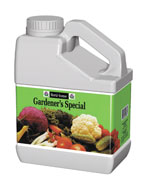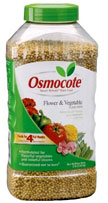Some gardeners have the best intentions for the growth and health of their plants, but inadvertently over fertilize by thinking “if a little bit is good, more will be better.” Too much can be worse than not enough.
 Other folks forget to fertilize then overdo it with one big dose of plant food after months and months with none. Too much at one time can be worse than not fertilizing at all.
Other folks forget to fertilize then overdo it with one big dose of plant food after months and months with none. Too much at one time can be worse than not fertilizing at all.
Because trees, shrubs, flowers, grasses, vines and vegetables all have individual needs there is no “one-size-fits-all” option for fertilizing: different plants need different types of fertilizers, so it’s important to become familiar with what works best for the plants you need to feed. There are some great general-purpose fertilizers, but they may not meet the needs of all the plants in your yard and garden.
Very important: never fertilize a dry plant. Water it and wait 24 hours before fertilizing. If a plant is stressed due to lack of fertilizer, foliar* feeding is recommended because it is the quickest way to put nutrients back into the plant. (*Foliar means “pertaining to leaves.”)
Foliar feeding means a water-soluble fertilizer is applied both to the roots and to the leaves and stems of a plant. It is best done when the pores of most plants are open to receiving nutrients—outdoors that usually means before 9:00 a.m. Two very important notes about foliar feeding:
- Spray the plants with plain water before foliar feeding.
- Never use this method in the full heat of a peak summer day (especially when temperatures reach 85ºF or above) because the action of the sun on freshly sprayed foliage can burn the leaves.
 How much to fertilize is based on the size of the plant and the specific composition of the soil where it is planted. Some areas around Santa Fe have soils that are thick with clay, others are more sandy or loamy. The Santa Fe County Extension Agency is a great place to get specific information about local soils—they recommend having your soil tested so you know what you’re working with.
The simplest option is to come in to either of Payne’s Garden Centers and ask one of our staff experts for help finding the products that work well locally.
How much to fertilize is based on the size of the plant and the specific composition of the soil where it is planted. Some areas around Santa Fe have soils that are thick with clay, others are more sandy or loamy. The Santa Fe County Extension Agency is a great place to get specific information about local soils—they recommend having your soil tested so you know what you’re working with.
The simplest option is to come in to either of Payne’s Garden Centers and ask one of our staff experts for help finding the products that work well locally.
How often you need to fertilize is based on which plants you’re feeding and which fertilizer you choose. Fertilizers come in different forms:
- Water-soluble fertilizers must be mixed with water each time they are used, but this form makes them readily available to plants.
- Granulated fertilizers release nutrients to plants over a period of about a month. (See manufacturer’s directions on the package.)

- Time-release fertilizers break down over a period of several months. How quickly it breaks down is primarily due to soil temperature.
The manufacturer’s directions on the packaging are usually clear about the mixing ratio and how often to apply. For more help, come in to either Payne’s Garden Center.
